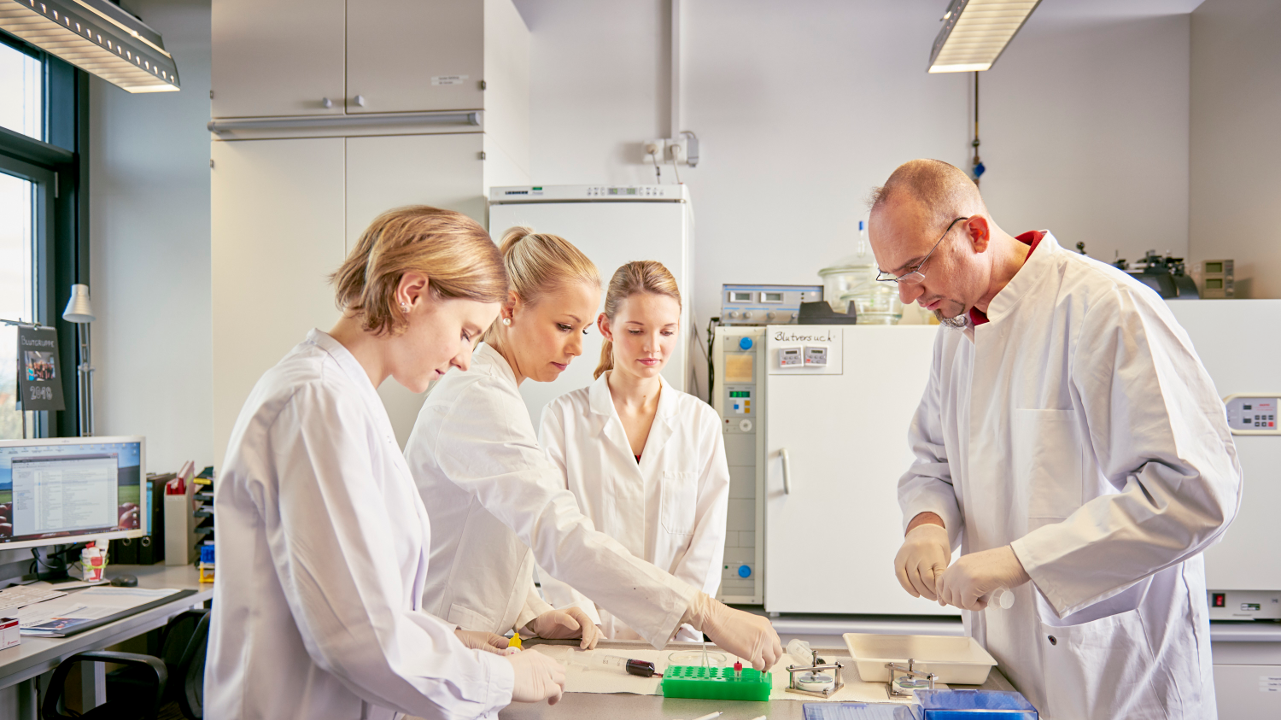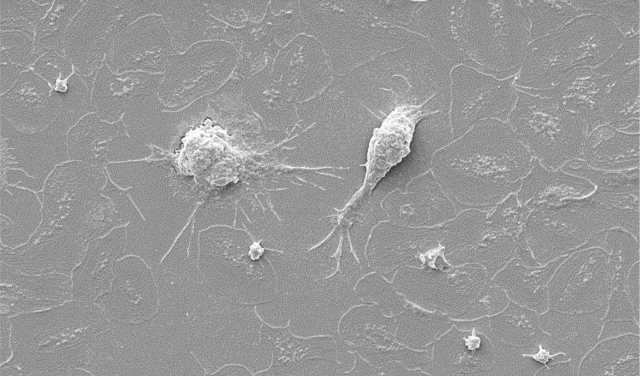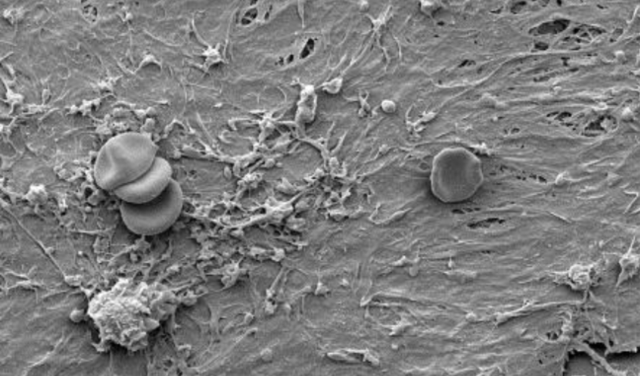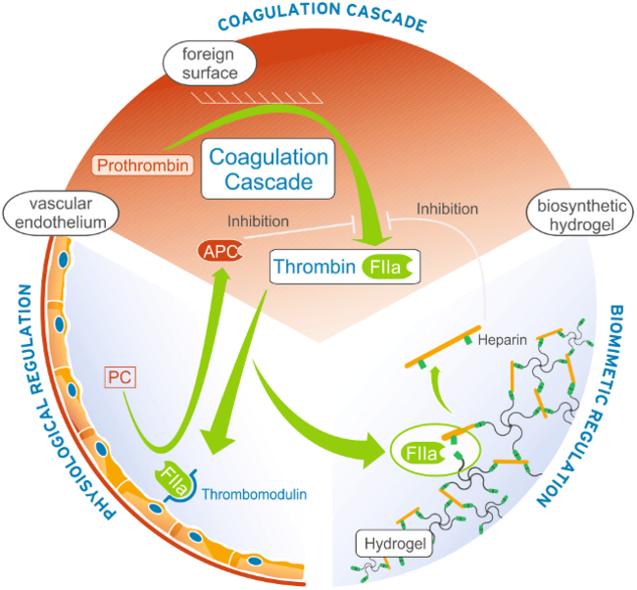DIVISION POLYMER BIOMATERIALS SCIENCE
Hemocompatibility of biomaterials
Core Research


We work to decipher the relevance of material surface properties for the activation of host defence reactions and develop adaptive inhibitor release systems to control these processes.

MATERIAL-INDUCED BLOOD ACTIVATION
When blood contacts material surfaces, enzymes of the intrinsic pathway of the coagulation cascade and activating mediators from adherent platelets can induce blood coagulation. We investigate protein adsorption processes which are relevant for the activation of the blood coagulation cascade (FXIIa, FSAP), platelets (fibrinogen) and the immune system (complement cascade). To identify surface characteristics of least activating, most tolerable, hemocompatible materials, our approach is the incubation of material surfaces with fresh whole human blood in customized incubation chambers. This setup provides a realistic blood-material interface with the possibility to vary interaction time, shear forces and blood preconditioning. Blood and surfaces are analyzed for specific markers of interest concerning several blood activation processes.
Selected References
Davydiuk N., Londhe V., Maitz M.F., Werner C., Fery A., Besford Q.A. The interaction of glycogen nanoparticles with human blood., Nanoscale 17(1): 252-260 (2025).
Valtin J., Behrens S., Ruland A., Schmieder F., Sonntag F., Renner L.D., Maitz M.F., Werner C. A new in vitro blood flow model for the realistic evaluation of antimicrobial surfaces., Advanced Healthcare Materials 12(28): e2301300 (2023).
Sperling C., Maitz M.F., Körber V., Hänsel S., Werner C. Advanced in vitro hemocompatibility assessment of biomaterials using a new flow incubation system. , Biomaterials Advances 153: 213555 (2023).


Hemocompatible coatings
In vivo, coagulation and inflammation are subtly balanced physiological systems of activators and inhibitors. Medical devices in blood often disturb this balance. We develop feedback controlled release systems, which integrate into the physiological control loops. For example, coagulation responsive release systems for heparin were shown to afford outstanding thromboprotection. The concept of adaptive release systems for host response inhibitors is currently extended also to other functions, such as immunomodulation.
Selected References
Maitz M.F., Kaiser D.P.O., Cuberi A., Weich Hernández R., Mühl-Benninghaus R., Tomori T., Gawlitza M. Enhancing thromboresistance of neurovascular nickel-titanium devices with responsive heparin hydrogel coatings. Journal of NeuroInterventional Surgery 10.1136/jnis-2024-021836 (2024).
Helmecke T., Hahn D., Ruland A., Tsurkan M.V., Maitz M.F., Werner C. Adsorbed polymer conjugates to adaptively inhibit blood coagulation activation by medical membranes. Journal of Controlled Release 368: 344-354, 10.1016/j.jconrel.2024.02.034 (2024).
Helmecke T., Rose I.I., Tsurkan M.V., Roth H., Maitz M.F., Werner C., Wessling M. Poly(styrene-alt-maleic anhydride)-copolymers blended in poly(ether sulfone) membranes as a platform for effective biomolecular surface functionalization. Journal of Membrane Science 689:122050, 10.1016/j.memsci.2023.122050 (2024).
Helmecke T., Hahn D., Matzke N., Ferdinand L., Franke L., Kühn S., Fischer G., Werner C., Maitz M.F. Inflammation-controlled anti-inflammatory hydrogels. Advanced Science10(7): e2206412, 10.1002/advs.202206412 (2023).

